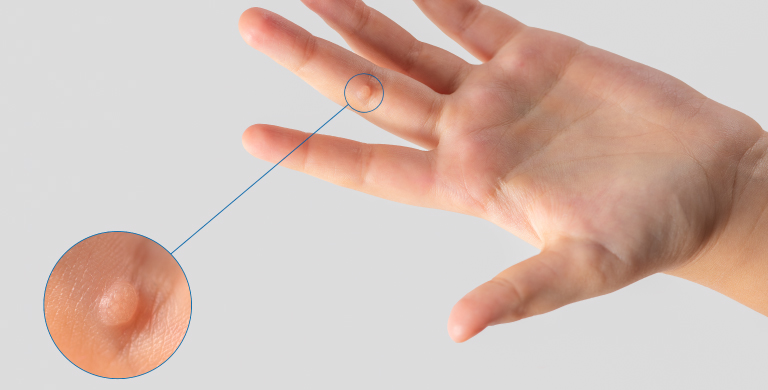Many of us have had a wart somewhere on our bodies at some time. Other than being a nuisance, most warts are harmless and go away on their own.
Anyone can get warts, but they are most common in children and teenagers. That’s because children are more prone to cuts and scrapes and their immune systems aren’t fully developed. Warts are also more common in people who have weakened immune systems. They can affect any area of the body, but tend to invade warm, moist places, like small cuts or scratches on fingers, hands, elbows and bottoms of feet.
Warts are usually painless unless they’re on the soles of the feet or another part of the body that gets bumped or touched all the time. There are several types of warts, including common warts, flat warts, and plantar warts.
If you want to know the best ways to prevent and treat warts, it’s crucial to know what’s true and what’s false. We debunk some common myths about warts and set the record straight.
Myth #1: “Warts are caused by touching frogs or toads.”
Warts are skin growths – flesh-coloured, pink, light or tan-coloured bumps – that develop on different body parts and are caused by the human papillomavirus (HPV) family. No amount of handling frogs or toads — or any reptiles or amphibians — will cause you to develop warts.
Myth #2: “Warts aren’t contagious.”
Because papillomavirus is contagious, warts are also contagious and can be caught by touching someone who has them. The virus enters the skin through cuts, which is why children are more prone to warts because they get a lot of scrapes and cuts. Warts can spread not just from person to person, but from one area of the body to another. Scratching an existing wart and then touching healthy skin could spread the wart to other parts of the body.
Myth #3: “Warts can’t be removed.”
Warts can be removed. Without treatment, it can take anywhere from six months to two years for a wart to go away. Because warts require multiple treatments, some people believe they cannot be removed and give up on treating them. But dermatologists have many treatment options for warts—such as cryotherapy (freezing the wart off) or Cantharidin (“lifting” the wart off). A doctor might decide to remove a wart if it’s painful or interferes with activities because of the discomfort.
Myth #4: “Warts won’t grow back once removed.”
Yes, warts can grow back. The HPV virus can remain dormant in host skin cells and then re-activate months, even years later. The best way to remove a wart is to see your dermatologist. It is most important to first make sure the growth is accurately diagnosed. There are many skin lesions, both benign and malignant, that can mimic warts. Depending on the type of warts your child is experiencing, our child-friendly doctors will determine the best course of treatment that keeps your child as comfortable as possible.
Myth #5: “It’s impossible to prevent warts.”
Although there’s no way to prevent warts, encouraging children to wash their hands and skin regularly and well is always a good idea. If your child has a cut or scratch, use soap and water to clean the area because open wounds are more susceptible to warts and other infections. It’s also wise to have children wear waterproof sandals or flip-flops in public showers, locker rooms, and around public pools (this can help protect against plantar warts and other infections, like athlete’s foot).
If your child is experiencing warts that are painful, spreading, needs removal or worrying your child, our child-friendly healthcare team is here to assist.
Sources and references consulted
- kidshealth.org
- premierdermatologypartners.com/blog/do-you-believe-these-myths-about-warts-and-their-treatment
- raisingchildren.net.au/guides/a-z-health-reference/warts












